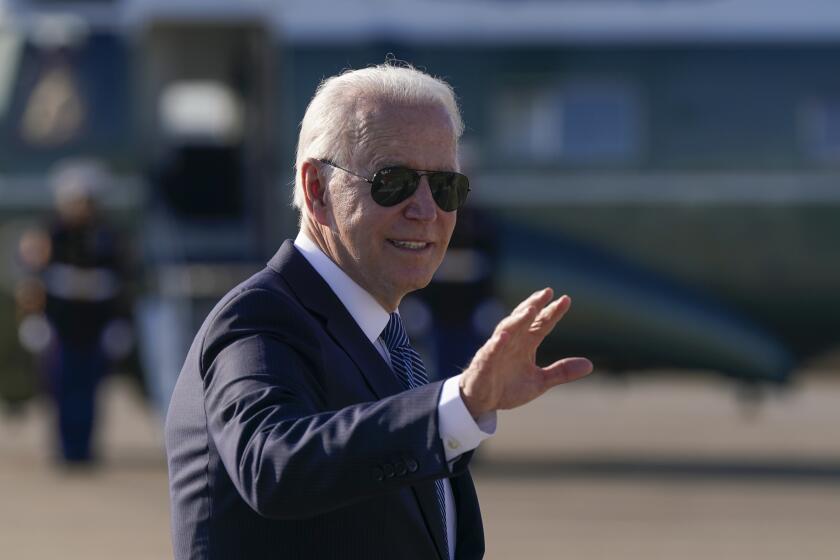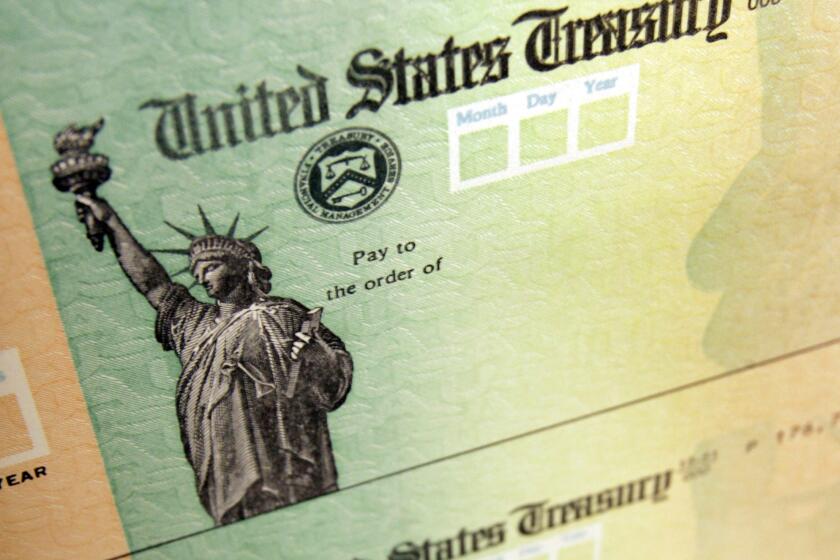Walking a Tightrope of Balanced Coverage
- Share via
Does The Times have a political bias? In this presidential campaign, such complaints abound from our readers, who see bias whenever their candidate is not portrayed in the most favorable light. They see bias expressed in headlines, the tone of stories, where the stories are played and in the size, display and overall tone of photographs--how big they are and whether a candidate is scowling, smiling or looking plain stupid next to his challenger. Readers, in other words, are quick to cite any example to show how much The Times dislikes their candidate.
Problem is, which candidate?
“If Bush so much as scratches his head, he’s on the first page, while Gore is relegated to the middle or back of your front section,” one Gore fan said.
But a Bush partisan noted that a “negative article on Al Gore [was] relegated” to a back page in the first section while a negative article about Bush appeared on Page 1. He concluded: “This paper is so slanted politically.”
Similar complaints are made regarding photos. One 35-year Times’ reader said he was canceling his subscription because he “resents” The Times’ bias against Gore: “You print about four pictures of Bush for every picture of Gore, and your coverage of Bush is extraordinarily favorable. Your coverage of Gore is extraordinarily unfavorable.” But here’s the opposite view: “Where in the world are the photos of George Bush?” a reader asked, citing one period--June 14-19--when The Times ran six photos of Gore and none of Bush. (The June total was 21 photos of Gore, 15 of Bush. In May, it was 19 of Bush and 16 of Gore.)
Times National Editor Scott Kraft said the goal is fairness “over the entire course of the campaign.” And a campaign by its nature is dynamic. “It turns this way and that--issues appear--controversies crop up surrounding both candidates at different times,” Kraft said. “So if you take a snapshot of the campaign at any given moment, one candidate may well be getting more ink, positive or negative.”
Political journalists recoil when bias is alleged because they pride themselves on being objective, in constantly weighing stories and photos of the major-party candidates in an effort to be fair. Nor would it be easy to engage in a conspiracy of bias, given the range of people involved in coverage: more than 30 political reporters and editors plus news editors, copy editors, photo editors, headline writers, page designers and an executive editor, who oversees Page 1. Ask them what they are striving for, and all will say “fairness.”
“We take a look at where we play stories and aim for balance,” said Times political editor Millie Quan, adding that editors seek an equal number of policy and issues stories, profiles and investigative pieces on the two major candidates. Since the March primaries, The Times had run virtually the same number of Bush and Gore stories on Page 1.
Although a few readers complain about bias in stories, the readers’ representative staff examines every complaint and has found scant evidence to support this. For example, one Bush story seemed negative while a Gore story that same day was more positive, but Gore was before a friendly audience and Bush wasn’t. That didn’t mean the reporters were biased.
Of course, some complaints are valid. In one instance, the day after the March 7 primaries, Bush and Gore shared a six-column front-page headline, but the story was accompanied by a three-column photo of Gore and a one-column photo of Bush. In fairness, they should have been the same size.
None of this addresses the complaints of those who favor minor-party candidates, and arguably the biggest bias throughout the media is the extent to which the two major parties are covered to the exclusion of other parties.
“We do live in a democracy, and no one is ever going to build a base if people can’t get their views out there,” lamented a reader on seeing the nomination acceptance speech of the Green Party’s Ralph Nader covered by a wire-service story on Page A10. Coverage of Libertarian candidate Harry Browne’s nomination, placed inside the local news section, similarly brought boos by his fans. Quan agreed that the Browne story should have run in the front section. She said coverage of minor-party candidates would step up after Labor Day.
But no matter what kind of political coverage The Times provides, complaints about fairness undoubtedly will continue from all sides. Perhaps that’s some measure of success.
More to Read
Get the L.A. Times Politics newsletter
Deeply reported insights into legislation, politics and policy from Sacramento, Washington and beyond. In your inbox twice per week.
You may occasionally receive promotional content from the Los Angeles Times.










